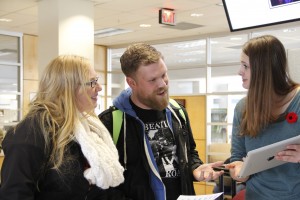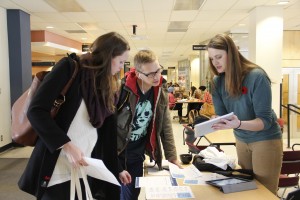There were two main takeaways from the Teacher Night at Science World: amazing resources, and great ideas.
I discovered that Science World provides free, teacher contributed, curriculum linked, science-based resources, lesson plans, and activities for educators. Additionally, Science World offers a program that connects teachers with scientists, engineers, technologists and tradespeople to enhance classroom teaching through workshops. I found the idea similar to the Skype classroom where you can invite guest speakers into the classroom through Skype.
I was also able to pick up some great resources for the students in my class. Based on the interests they expressed through their Genius Hour Projects (provide link), I collected information about starting a recycling program at our school and about programs offered at the local film production school. I think the students will be excited to receive the information.
The Science World staff presented several great inquiry based demonstrations that could easily be modified for the classroom. The demonstrations focused on discovering science through the active alteration of variables. They were similar in concept to the “undemos” we created in our Science class. One of the examples that I thought would make a particularly great inquiry-based demonstration was the Come-Back Can. It would be similar to a black/mystery box lesson in that the students could try to guess how the Can worked, and perhaps extend the activity by getting the students to attempt to recreate it.
 Follow
Follow

